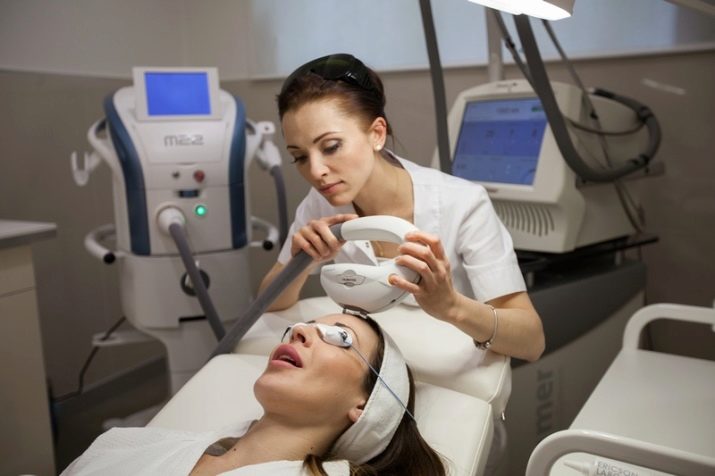All about photo epilation on the face
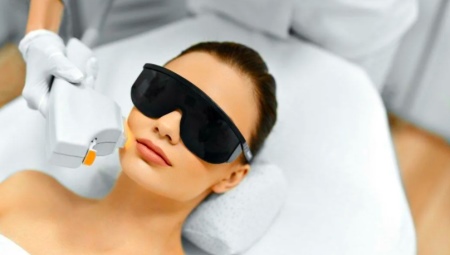
Photoepilation is one of the most popular ways to deal with excess facial hair. According to the principle of the procedure, the procedure resembles a laser version. The use of this hair removal method is popular not only among women, but also among men.
What it is?
Photoepilation on the face is a method of removing hairs by concentrating light. The procedure has many benefits. The process of its implementation does not imply pain and even minimal discomfort. The method is completely safe.
After photoepilation, no significant burns remain, and redness disappears within a few hours.
With this procedure, you can remove not only hair from small areas (correct eyebrows, remove hairs from the corners of the lips), but also treat large areas of the body.
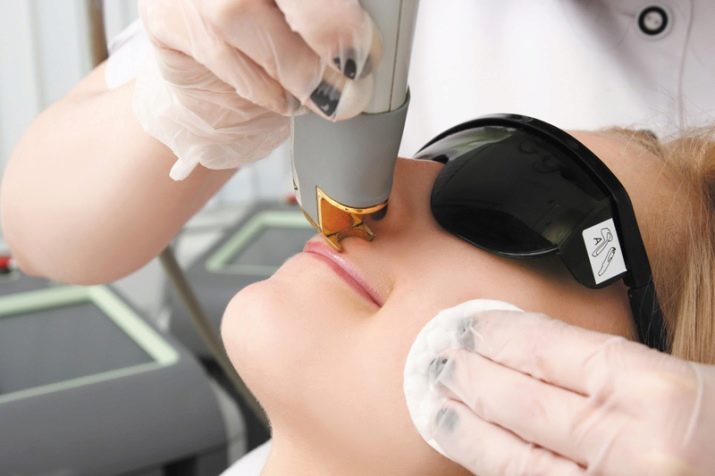
The peculiarity of photoepilation lies in the principle of influencing the hairs. When processing with light rays, not only they fall off, but also the dying off of the bulb is observed. This feature becomes the reason for the long-term effect after the session.
Removal of hair and dying off of the bulb is achieved due to oversaturation of the treated area with melanin. That is why photoepilation is especially recommended for those with dark hair. The method is not suitable for getting rid of light and gray hairs.
Benefits of the procedure:
- versatility (suitable for treating any area of the face and body);
- the speed of the procedure (for example, eyebrow processing takes no more than 15 minutes);
- preservation of the integrity of the skin (the device nozzle does not come into contact with the skin, the method is completely non-contact);
- the duration of the result (after removing the hairs by this method, their growth stops on average for six months).
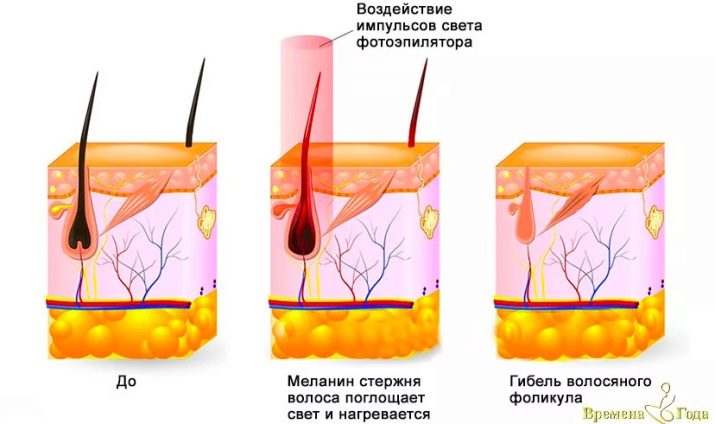
Indications and contraindications
The main indication for photoepilation is the presence of hair growth in atypical areas on the face. For example, women may have an excessive amount of dark hairs in the corners of the lips, on the line of the cheeks. This feature may be due to individual factors or the consequences of hormonal disruption.
Quite often, photoepilation is used to correct the eyebrows. The advantage of the procedure is speed and painlessness, therefore, the correction of their shape occurs quickly, and hair growth will slow down for many months. For the same reason, light removal of facial hair is used by men. Especially if you have excessive skin sensitivity to shaving.
Photoepilation has many contraindications. For example, hairs located on tattooed skin should not be removed in this way. In no case should you carry out sessions during a period of illness or allergy. It is strictly forbidden to treat areas with signs of bleeding (it can be both scratches and skin rashes).
Vegetation on moles, birthmarks or scars is also not removed in this way.
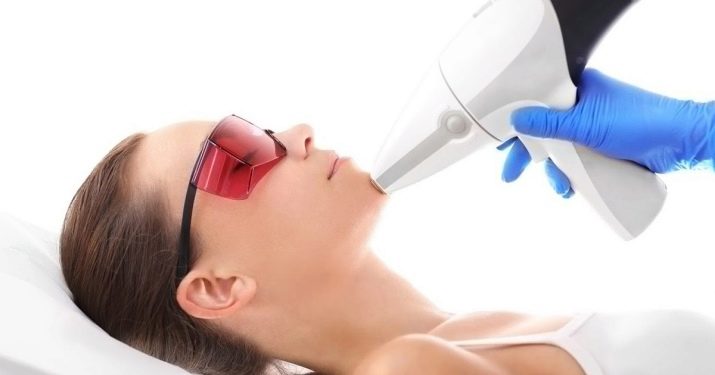
Absolute contraindications:
- age up to 16 years;
- cardiovascular diseases of any stage and form;
- the presence of a pacemaker in the body;
- violations of the pigment background;
- period of illness (acute respiratory infections, acute respiratory viral infections);
- period of pregnancy and lactation;
- keloid disease (regardless of the stage of development);
- endocrine system pathology;
- increased body temperature;
- helminthiasis;
- period of exacerbation of herpes;
- tendency to allergic skin reactions;
- the presence of severe irritation on the skin;
- chronic skin diseases;
- varicose veins at any stage;
- malignant tumors.
Ignoring the list of contraindications can cause serious side effects. These include increased pigmentation of the dermis, allergic reactions, exacerbation of skin diseases (for example, if the procedure was done in the presence of herpes).
The consequence can be a reverse reaction of the body, in which hair growth does not slow down, but increases.

How to Prepare?
Proper preparation for hair removal is very important. The result of the procedure may depend on this stage. The first thing to do is to exclude contraindications. A master can advise on this issue if he has a sufficient level of qualifications. In the absence of knowledge from a specialist, you can contact a dermatologist.
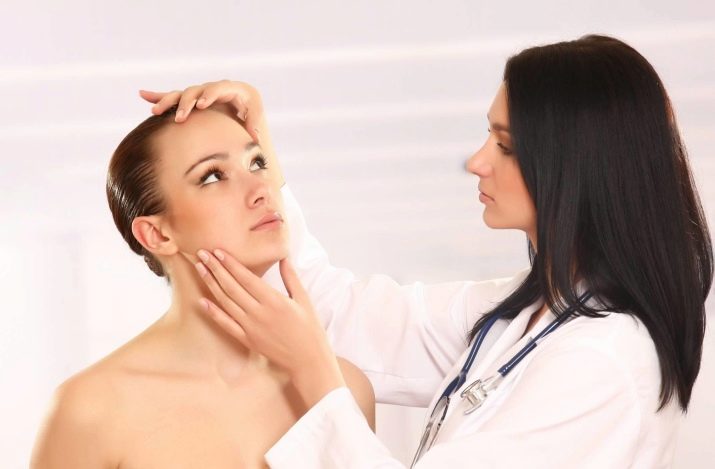
Mandatory stages of preparation for photoepilation on the face:
- on the eve of the procedure and for a month before it, you cannot use self-tanning products;
- for one month before photoepilation, you should not take strong drugs, including antibiotics of any groups;
- a few weeks before photoepilation, you cannot remove hairs by other methods (including using forceps);
- to protect the face from ultraviolet radiation, it is recommended to use special protective creams or wear hats with a visor;
- it is recommended to give up sunbathing at least 2 weeks before the scheduled procedure.
The eyes must be protected by discs during the session.... Otherwise, visual impairment or damage to the mucous membrane from the bright light beam may occur. It is also impossible to remove the disc during the session on your own in any case. Some salons use special metal lenses on straps. This method eliminates the accidental release of the eyes from the necessary protection.
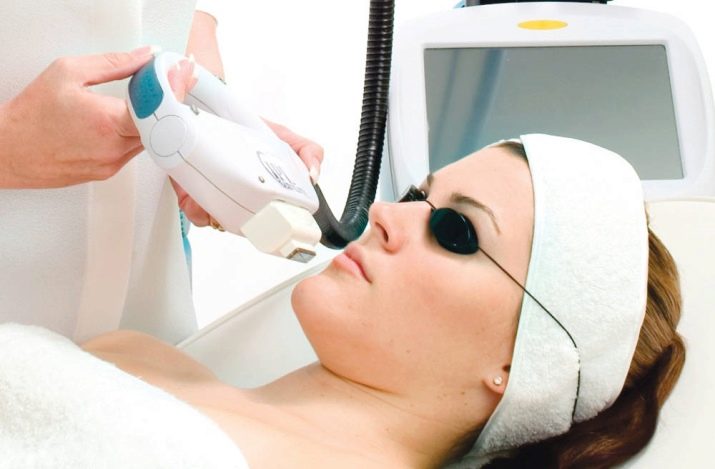
How is it done?
The duration of a face photoepilation session at home does not exceed 20 minutes. The result directly depends on several factors. First, the individual characteristics of the organism play an important role.Secondly, the qualifications of the cosmetologist, the correct selection of attachments and the depth of penetration of the device, as well as the quality of the equipment used are of no less importance. The algorithm of a specialist's actions during a facial hair removal session is almost always the same.
Stages of carrying out:
- the client is placed on a couch;
- the eyes are protected by special discs;
- a gel is applied to the area of the face to be treated to protect the skin;
- using a special manipulator with a nozzle, an area with increased hair growth is processed;
- the completion of the procedure is accompanied by the application of a soothing cream.
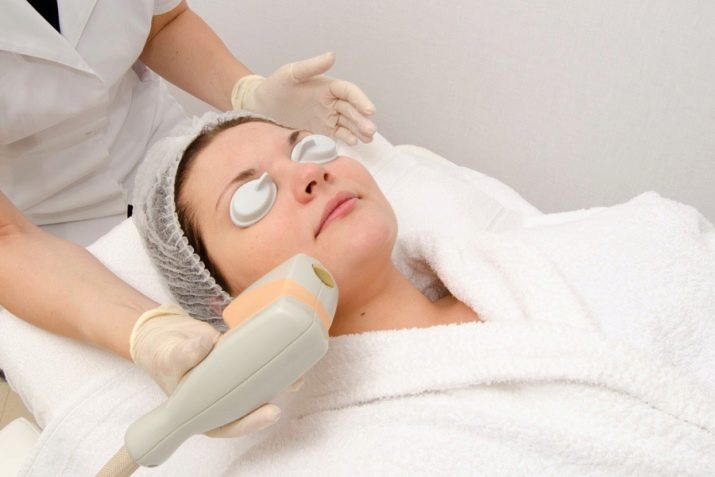
Follow-up care
Immediately after the photoepilation session, slight reddening of the skin may be observed. If the skin is sensitive, then there is a slight soreness or swelling of the treated areas. Such consequences persist for several hours. They cannot be called a side effect. This is a natural reaction of the body to the procedure.
Subsequent care nuances:
- if redness and discomfort in the treated areas persists for more than 2 hours, it is recommended to treat the skin with cooling agents (for example, Panthenol);
- do not use alcohol-based cosmetics for 7 days (irritation may occur);
- you should refuse to visit baths, saunas or pools for about 7 days (otherwise, side symptoms may occur);
- you cannot visit solariums and sunbathe in direct sunlight (the restriction is also observed for one week).
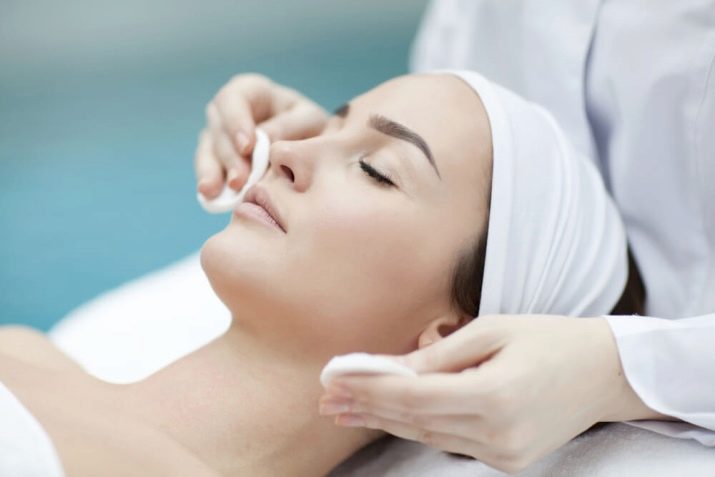
Review overview
Most of the customer reviews about hair removal are positive. The advantages of the procedure include speed and painlessness. The result lasts for months, which saves women and men from frequent concern for their appearance. Clients feel comfortable in the beautician's chair, and any fears during the session are practically absent.
Approximately 20-25% of people are not satisfied with the result. The negative reactions are mainly associated with the high cost of the sessions.
Side symptoms always appear under the influence of specific factors - mistakes of clients and specialists, excessive skin sensitivity, non-compliance with the rules of rehabilitation or preparation for sessions.
